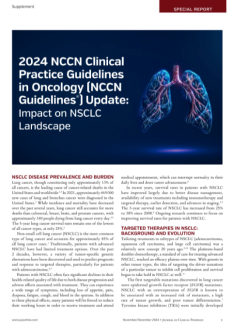Embracing Change and Advancing Innovation: A Transformative Start to 2025
Welcome to our first issue of 2025. As we enter this new year, we are faced with a lot of uncertainty. A new President took office, accompanied by a new cabinet and a team of advisors, bringing an inevitable wave of change—though the exact nature of that change remains unclear.
In this issue, we debut a new column, Transformative Business Trends (page 62), where Vogenberg and Sood highlight that 2025 is expected to bring another year of significant increases in health care costs, regardless of insured status. Fully-insured and self-insured employers will need to explore creative solutions to address these cost challenges. One promising opportunity lies in improving financial forecasting through patient-centered pathway approaches during clinical development, working collaboratively with third party insurers and advisors. This approach could enhance predictability and mitigate future risk exposure, benefiting all stakeholders in the business of health care. However, achieving these outcomes requires addressing data-access barriers to capture the entire patient care experience—both direct and indirect—and accurately assess its impact on health care risks and cost offsets.
Provider-driven oncology models are gaining significant traction, shaping how cancer care is delivered. In our Original Research feature (page 20), Nuccio et al discuss a retrospective study examining the clinical implementation of an oncology-directed model for guideline-concordant germline genetic testing in patients with advanced prostate cancer. By leveraging electronic medical records (EMRs) and biostatistical analysis, the study sheds light on the real-world application of genetic testing, uncovering key insights into pathogenic variants, disparities in variant detection among racial groups, and the critical role of genetic counseling in patient care. As oncology continues to evolve, studies like this emphasize the importance of integrating provider-led models to enhance access and improve patient outcomes.
As we reflect on the 10 years since the Journal of Clinical Pathway’s (JCP’s) inception, we have witnessed a remarkable transformation in how clinical pathways are understood and utilized. In his column, Driving Value-Based Care and Improving Oncology Outcomes (page 52), Kuntz discusses the evolution of oncology clinical pathways over the past two decades. Once limited to a few indications, pathways have grown in depth and complexity from a handful of indications (eg, 90% of cancers), with one program guiding well over 2600 cancer indications. Kuntz explains the transition from fee-for-service to one-sided risk, and ultimately two-sided valued-based risk, where accountability extends to the total cost of patient care. In this value-based care model, oncology practices rely on tools like pathways to ethically provide guidance to physicians in selecting the most appropriate, effective, and highest value treatments for their patients. By focusing on efficacy, safety, and cost, pathways have become the most effective tool for managing costs in this setting, helping providers make rational, predictable, and ethically sound decisions while minimizing adverse effects that could lead to costly emergency room visits and hospitalizations.
Kicking off the year on a strong note, we hope you find the articles and columns in this issue both engaging and thought-provoking. As always, JCP welcomes your submissions and research contributions throughout the year.

















